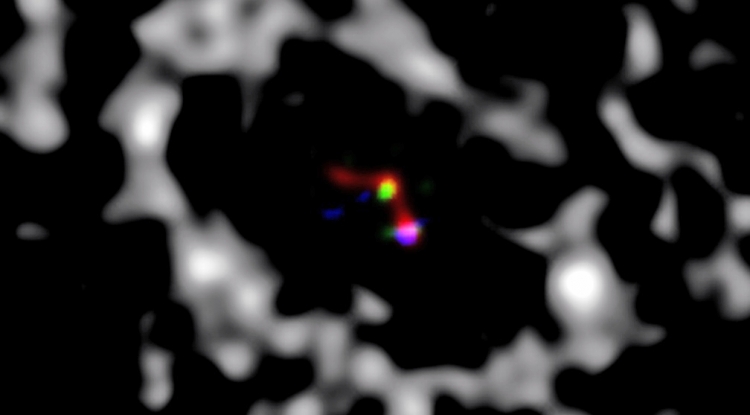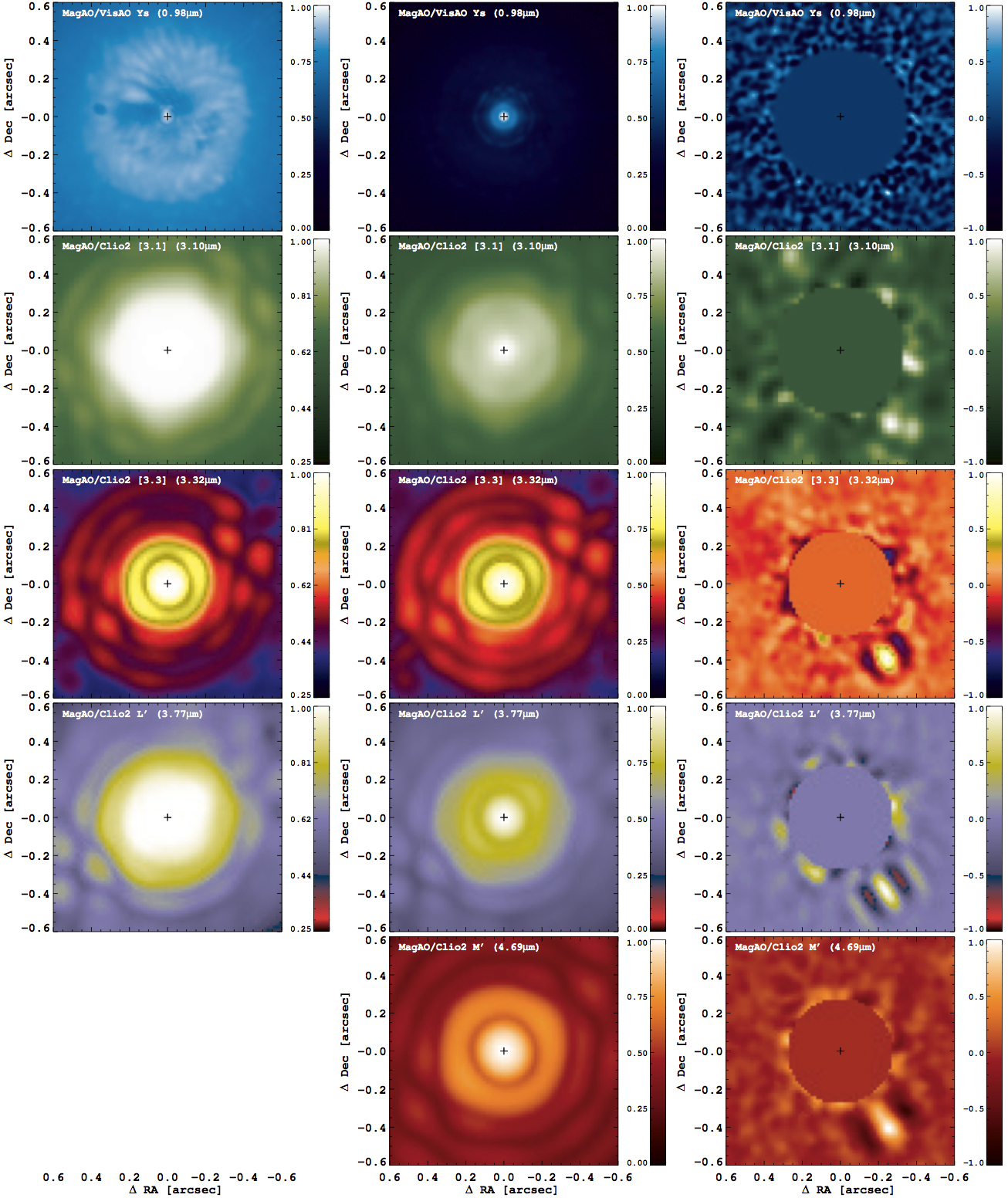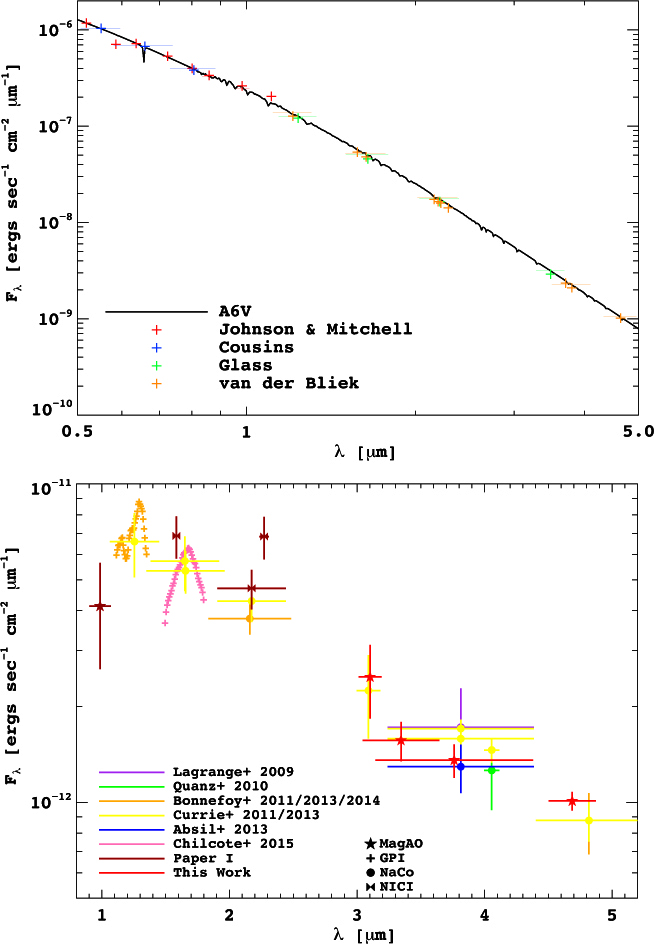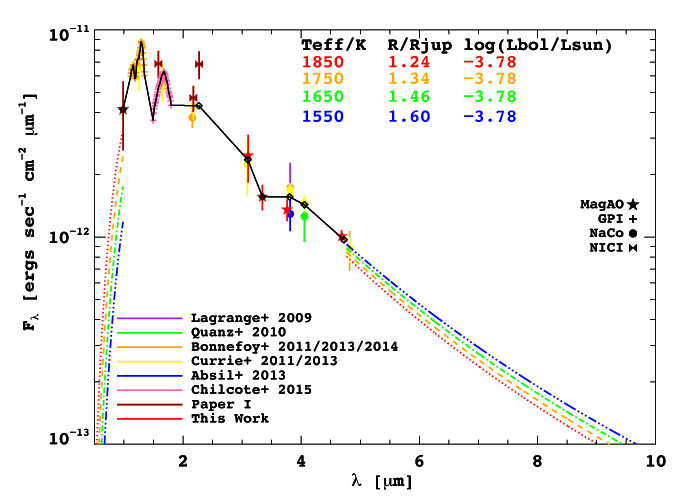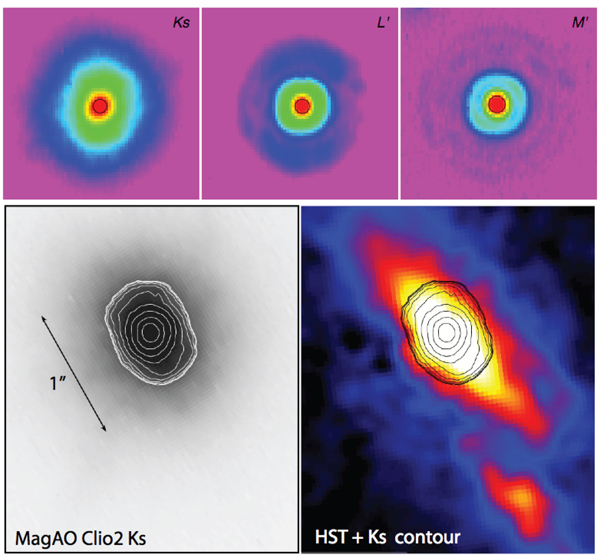It’s been a while since we’ve had a results post, but it is returning after almost 10 years.
Abstract: 2MASS J16120668-3010270 (hereafter 2MJ1612) is a young M0 star that hosts a protoplanetary disk in the Upper Scorpious star-forming region. Recent ALMA observations of 2MJ1612 show a mildly inclined disk (i=37∘) with a large dust-depleted gap (Rcav≈0.4″ or 53 au). We present high-contrast Hα observations from MagAO-X on the 6.5m Magellan Telescope and new high resolution sub-mm dust continuum observations with ALMA of 2MJ1612. On both 2025 April 13 and 16, we recovered a point source with Hα excess with SNR ≳5 within the disk gap in our MagAO-X Angular and Spectral Differential (ASDI) images at a separation of 141.96±2.10 mas (23.45±0.29 au deprojected) from the star and position angle (PA)= 159.00±0.55∘. Furthermore, this Hα source is within close proximity to a K band point source in SPHERE/IRDIS observation taken on 2023 July 21 (Ginski et al. 2025). The astrometric offset between the K band and Hα source can be explained by orbital motion of a bound companion. Thus our observations can be best explained by the discovery of an accreting protoplanet, 2MJ1612 b, with an estimated mass of 4MJup and Hα line flux ranging from (29.7 ±7.5)×10−16 ergs/s/cm2 to (8.2±3.4)×10−16 ergs/s/cm2. 2MJ1612 b is likely the third example of an accreting Hα protoplanet responsible for carving the gap in its host disk, joining PDS 70b and c. Further study is necessary to confirm and characterize this protoplanet candidate and to identify any additional protoplanets that may also play a role in shaping the gap.
Li, J., Close, L., and Long, F., et al. “Discovery of Hα Emission from a Protoplanet Candidate Around the Young Star 2MASS J16120668-3010270 with MagAO-X”
Read the article on ArXiv here.


